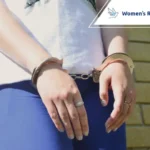Every child deserves to feel safe, cared for, and protected—but for thousands of kids in California’s foster care system, this isn’t always the case.
Shocking reports have revealed widespread instances of sexual abuse within these environments, yet the issue remains disturbingly underreported. In 2022, Los Angeles County reported 14,735 child referrals for sexual abuse, revealing a serious systemic problem.
This blog explores how abuse impacts foster children, what legal recourse exists, and how families and communities can take action to keep vulnerable children safe.
A Broken System Failing to Protect Children

The foster care system is designed to provide temporary homes for children who cannot remain with their biological families.
Sadly, many foster care placements have become environments where abuse can thrive. These aren’t isolated incidents. Studies and lawsuits have uncovered patterns of sexual misconduct, physical abuse, and neglect across multiple counties in California.
Children in foster homes are particularly at risk due to:
- Lack of consistent oversight and accountability
- Understaffed and overworked Child Protective Services
- Poorly vetted foster parents and adoptive family screenings
- Limited training and support for foster families
When sexual advances, inappropriate physical contact, or demands for sexual favors occur, children may be too scared or ashamed to report what happened. The trauma can lead to long-term effects such as mental health struggles, emotional distress, and delayed or impaired child well-being.
Taking Legal Action After Abuse
Survivors of childhood sexual abuse in foster family homes have legal rights. California laws allow victims to file sexual harassment lawsuits or civil claims against both individuals and institutions responsible for their abuse.
In many cases, survivors have sued not just their adoptive parents or guardians, but also agencies like Child Protective Services that failed in their duty to act.
Legal actions may include claims for:
| Type of Claim | Description |
| Sexual Harassment | Unwanted touching, comments, or behavior of a sexual nature within a foster setting |
| Negligence | Failure of state or private agencies to properly monitorfoster care placements |
| Emotional Distress | Psychological trauma resulting from sexual abuse or physical abuse |
| Medical Care | Costs for treatment, counseling, or psychiatric support following the abuse |
A sexual harassment lawyer can help survivors and their families understand the available options and guide them through filing a claim.
What You Can Do
Whether you’re part of a foster family, know someone in the foster care system, or just care about children’s safety, there are ways to help.
If you suspect abuse in foster homes:
- Report immediately to Child Protective Services or law enforcement.
- Speak with a sexual harassment lawyer to understand legal options.
- Encourage the child to talk with a trusted adult or therapist.
- Document signs of abuse, including changes in behavior or unexplained injuries.
For community members and advocates:
- Support outreach programs that train and educate foster families.
- Demand better oversight and transparency from local agencies.
- Volunteer or donate to nonprofits that serve abused or at-risk foster children.
Why Prevention Must Come First
While accountability is essential, prevention is equally critical in protecting foster children from harm. Many cases of sexual abuse could be avoided with stronger safeguards in place. That includes thorough background checks on caregivers, mandatory abuse prevention training, and more frequent, unannounced home visits by child welfare workers.
Child welfare agencies must also create safe channels for children to report abuse without fear of retaliation or disbelief. These are vulnerable children—many already coping with loss, instability, or trauma. They should never question their safety in a home meant to protect them.
Preventing harm before it happens not only saves children from lasting emotional distress but also strengthens public trust in the entire foster care system. Investing in prevention is one of the most compassionate and effective ways to support these children and give them a real chance at healing and stability.
Get the Care and Guidance You Need
Ending abuse in foster homes starts with acknowledgment—and then, action. Too often, these children are forgotten or silenced, left to endure pain without justice or support. Our collective responsibility is to ensure a broken system does not dictate children’s outcomes.
If you or someone you love has experienced sexual abuse in the foster care system, our legal team is here to help. We offer free consultations, compassionate support, and strong advocacy to pursue justice.
Contact us today to speak with someone who can help.






